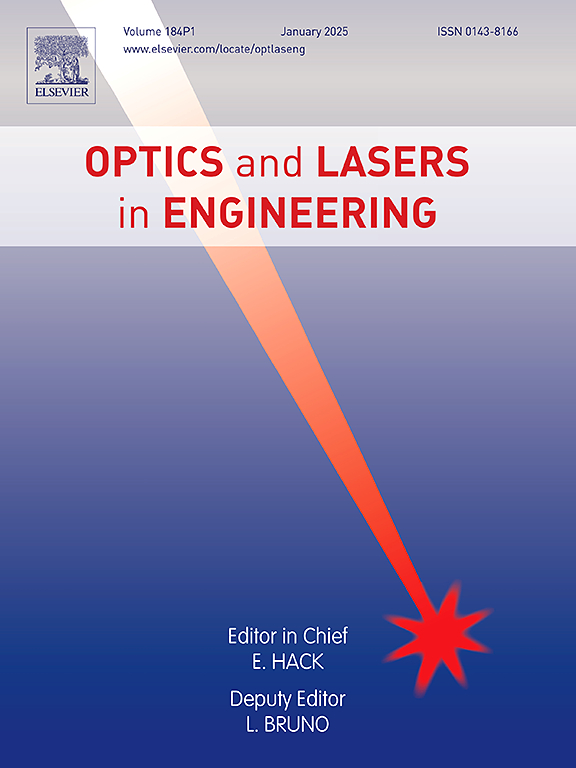Femtosecond laser processing with aberration correction based on Shack-Hartmann wavefront sensor
IF 3.5
2区 工程技术
Q2 OPTICS
引用次数: 0
Abstract
Optical aberrations are critical for high-precision and large-depth fabrication of femtosecond lasers in transparent media. Some approaches have been demonstrated to correct these aberrations, such as calculated formulas, iterative algorithms for phase retrieval, and neural networks. However, these approaches have a few drawbacks, such as insufficient aberration correction and a lack of real-time operation, limiting the processing depth and performance of the device. Thus, this study demonstrated an aberration correction scheme with direct wavefront sensing. The aberrations during processing at different depths, from 100 to 600 μm, were measured using a Shack-Hartmann wavefront sensor. As a guide star, this sensor used the supercontinuum emitted by the plasma, which is generated by multiphoton absorption and avalanche effects in the focal region. A liquid-crystal spatial light modulator (SLM) effectively compensated the aberrations. Voxels with a constant aspect ratio of 2.82–2.91 were fabricated in different depths, significantly lower than the aspect ratio of 4.46–19.5 with uncorrected aberrations. This technology allows the precise fabrication of three-dimensional photonic devices consisting of curved waveguides at continuously different depths and improves the throughput of laser processing.
基于 Shack-Hartmann 波前传感器的具有像差校正功能的飞秒激光加工技术
光学像差对于在透明介质中高精度、大深度制造飞秒激光器至关重要。目前已有一些方法可以校正这些像差,如计算公式、相位检索迭代算法和神经网络。然而,这些方法都有一些缺点,例如像差校正不足和缺乏实时操作,从而限制了设备的处理深度和性能。因此,本研究展示了一种直接波前传感的像差校正方案。使用 Shack-Hartmann 波前传感器测量了从 100 到 600 μm 不同深度处理过程中的像差。该传感器使用等离子体发射的超连续光作为导星,超连续光是由焦点区域的多光子吸收和雪崩效应产生的。液晶空间光调制器(SLM)有效地补偿了像差。在不同深度制造出了长宽比恒定为 2.82-2.91 的体素,明显低于未校正像差的 4.46-19.5 长宽比。这项技术可以精确制造由连续不同深度的弯曲波导组成的三维光子器件,并提高激光加工的吞吐量。
本文章由计算机程序翻译,如有差异,请以英文原文为准。
求助全文
约1分钟内获得全文
求助全文
来源期刊

Optics and Lasers in Engineering
工程技术-光学
CiteScore
8.90
自引率
8.70%
发文量
384
审稿时长
42 days
期刊介绍:
Optics and Lasers in Engineering aims at providing an international forum for the interchange of information on the development of optical techniques and laser technology in engineering. Emphasis is placed on contributions targeted at the practical use of methods and devices, the development and enhancement of solutions and new theoretical concepts for experimental methods.
Optics and Lasers in Engineering reflects the main areas in which optical methods are being used and developed for an engineering environment. Manuscripts should offer clear evidence of novelty and significance. Papers focusing on parameter optimization or computational issues are not suitable. Similarly, papers focussed on an application rather than the optical method fall outside the journal''s scope. The scope of the journal is defined to include the following:
-Optical Metrology-
Optical Methods for 3D visualization and virtual engineering-
Optical Techniques for Microsystems-
Imaging, Microscopy and Adaptive Optics-
Computational Imaging-
Laser methods in manufacturing-
Integrated optical and photonic sensors-
Optics and Photonics in Life Science-
Hyperspectral and spectroscopic methods-
Infrared and Terahertz techniques
 求助内容:
求助内容: 应助结果提醒方式:
应助结果提醒方式:


